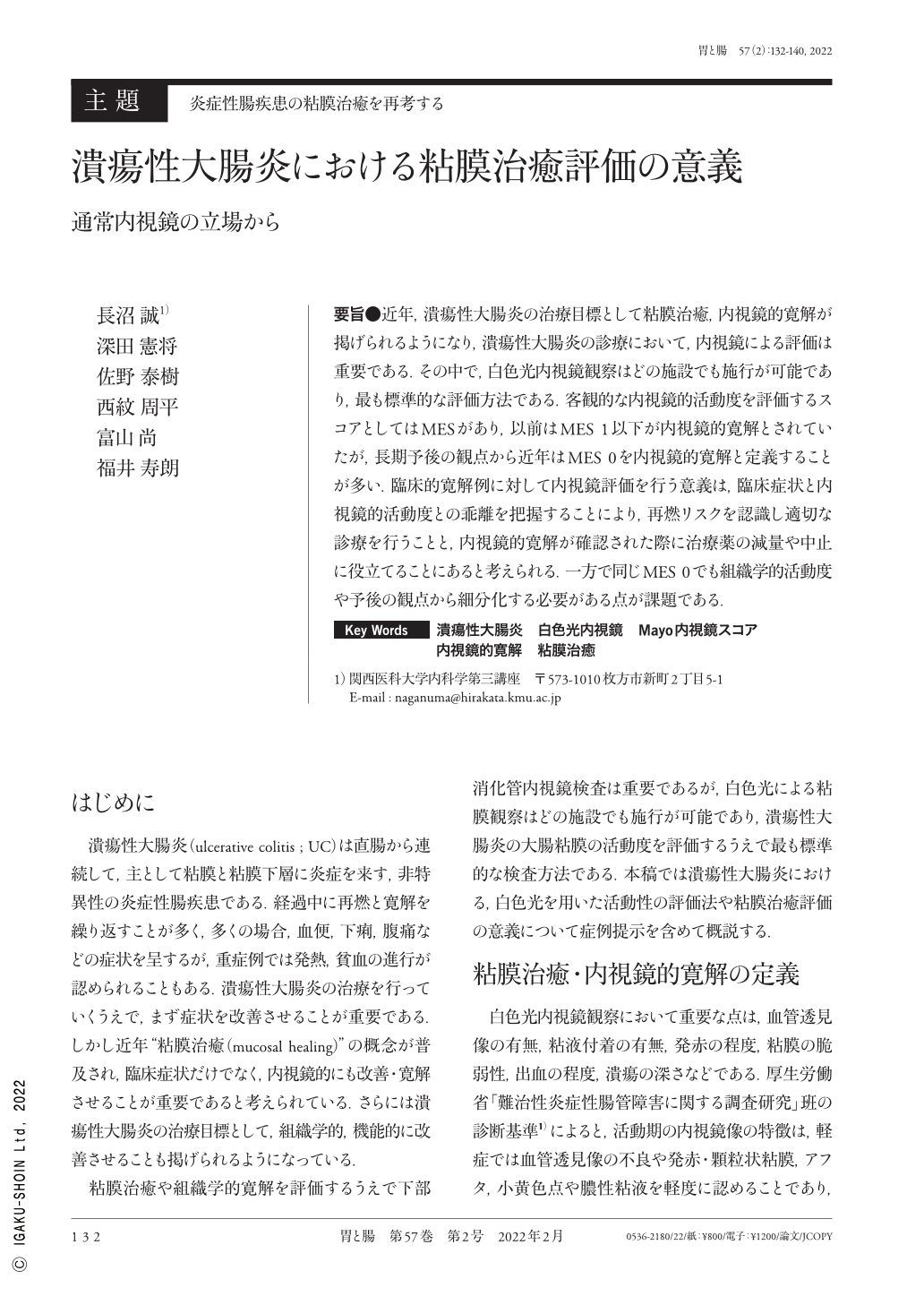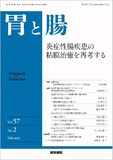Japanese
English
- 有料閲覧
- Abstract 文献概要
- 1ページ目 Look Inside
- 参考文献 Reference
要旨●近年,潰瘍性大腸炎の治療目標として粘膜治癒,内視鏡的寛解が掲げられるようになり,潰瘍性大腸炎の診療において,内視鏡による評価は重要である.その中で,白色光内視鏡観察はどの施設でも施行が可能であり,最も標準的な評価方法である.客観的な内視鏡的活動度を評価するスコアとしてはMESがあり,以前はMES 1以下が内視鏡的寛解とされていたが,長期予後の観点から近年はMES 0を内視鏡的寛解と定義することが多い.臨床的寛解例に対して内視鏡評価を行う意義は,臨床症状と内視鏡的活動度との乖離を把握することにより,再燃リスクを認識し適切な診療を行うことと,内視鏡的寛解が確認された際に治療薬の減量や中止に役立てることにあると考えられる.一方で同じMES 0でも組織学的活動度や予後の観点から細分化する必要がある点が課題である.
In recent years, mucosal healing or endoscopic remission has been set as the therapeutic target for UC(ulcerative colitis). Endoscopic evaluation with white light imaging is the standard modality for treating UC and can be performed at any facility. MES(Mayo endoscopic score)objectively evaluates the degree of endoscopic activity. Previously, an MES of 1 or less was considered as endoscopic remission(mucosal healing). However, more recently, an MES of 0 has been defined as endoscopic remission based on long-term prognosis. While the objective of endoscopic evaluation is to estimate the clinical risk of UC and provide appropriate medical treatment to patients in case of clinical remission, it is critical to consider the time elapsed from therapeutic intervention to endoscopic evaluation while assessing remission. Furthermore, once endoscopic remission is confirmed, it may be worthwhile to reduce or even discontinue medical treatments. In future, an MES of 0 may be subdivided into categories based on histological activity and prognosis.

Copyright © 2022, Igaku-Shoin Ltd. All rights reserved.


